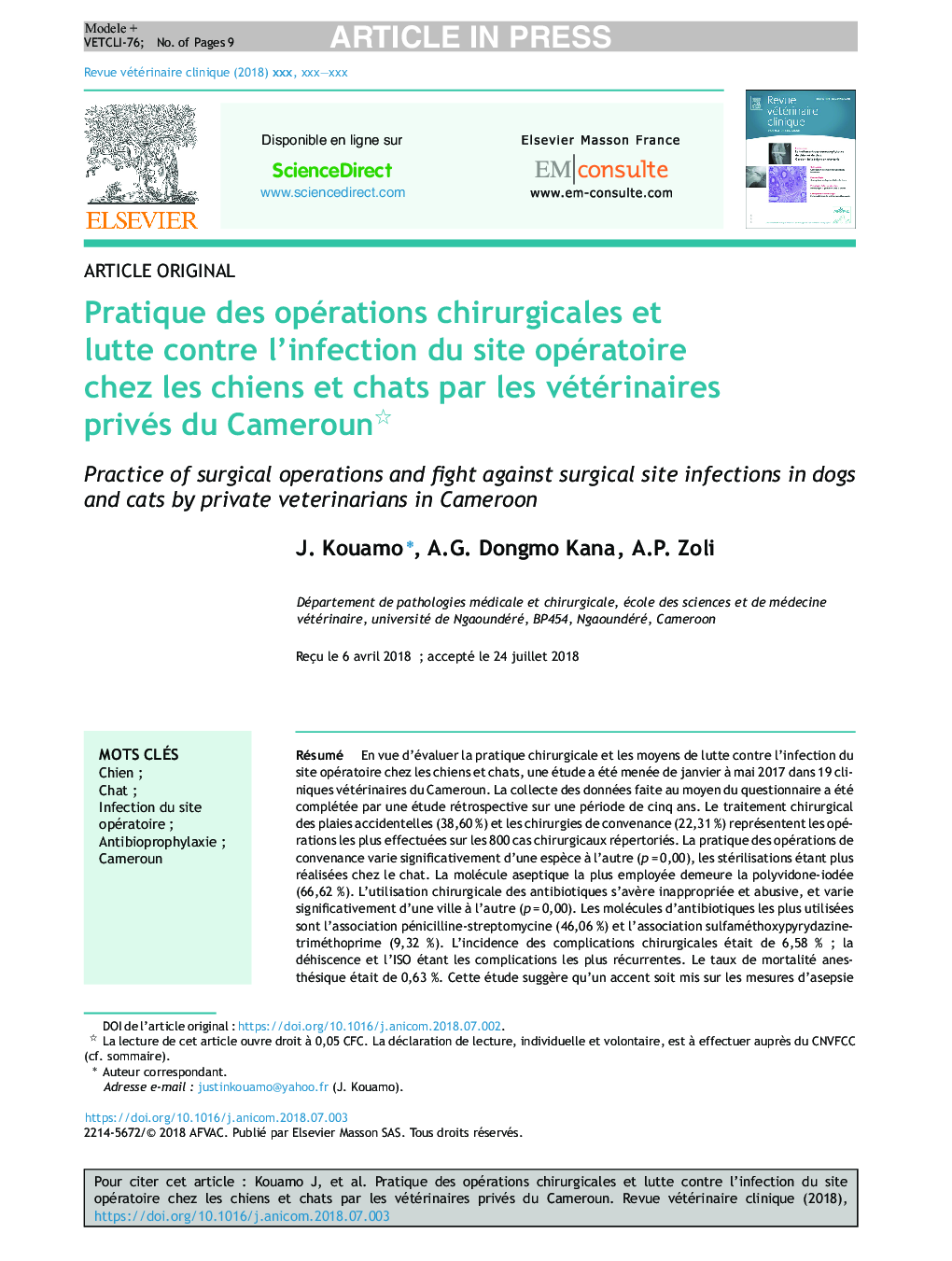| Article ID | Journal | Published Year | Pages | File Type |
|---|---|---|---|---|
| 10157951 | Revue Vétérinaire Clinique | 2018 | 9 Pages |
Abstract
In order to evaluate the practice of surgical operations as well as the means implemented to deal with surgical site infections in dogs and cats, a survey was undertaken from January to May 2017 in 19 veterinary clinics of Cameroon, including seven in Douala and 12 in Yaounde. Data collection using the questionnaire was supplemented by a retrospective study over a five-year period. Surgical treatment of accidental wounds (38.60%) and the convenience surgeries (22.31%) represents the operations most carried out on the 800 indexed cases. The realization of convenience operations (sterilization and esthetic surgery) varies significantly from one species to another (PÂ =Â 0.00), sterilizations being more realized in the cat. The most commonly used aseptic molecule remains polyvidone-iodine (66.62%). The surgical use of antibiotics is inappropriate and abusive, and varies significantly from one city to another (PÂ =Â 0.00). The most widely used antibiotic molecules are the penicillin-streptomycin combination and the sulfamethoxypyrydazine-trimethoprim combination accounting for 46.06% and 9.32% of common uses, respectively. The incidence of surgical complications was 6.58%; dehiscence and surgical site infections being the most recurrent complications. The anesthetic mortality rate was 0.63%. This study suggests that emphasis be placed on aseptic measures and postoperative follow-up, and better use of antibiotics for surgical prophylaxis.
Keywords
Related Topics
Health Sciences
Veterinary Science and Veterinary Medicine
Veterinary Medicine
Authors
J. Kouamo, A.G. Dongmo Kana, A.P. Zoli,
